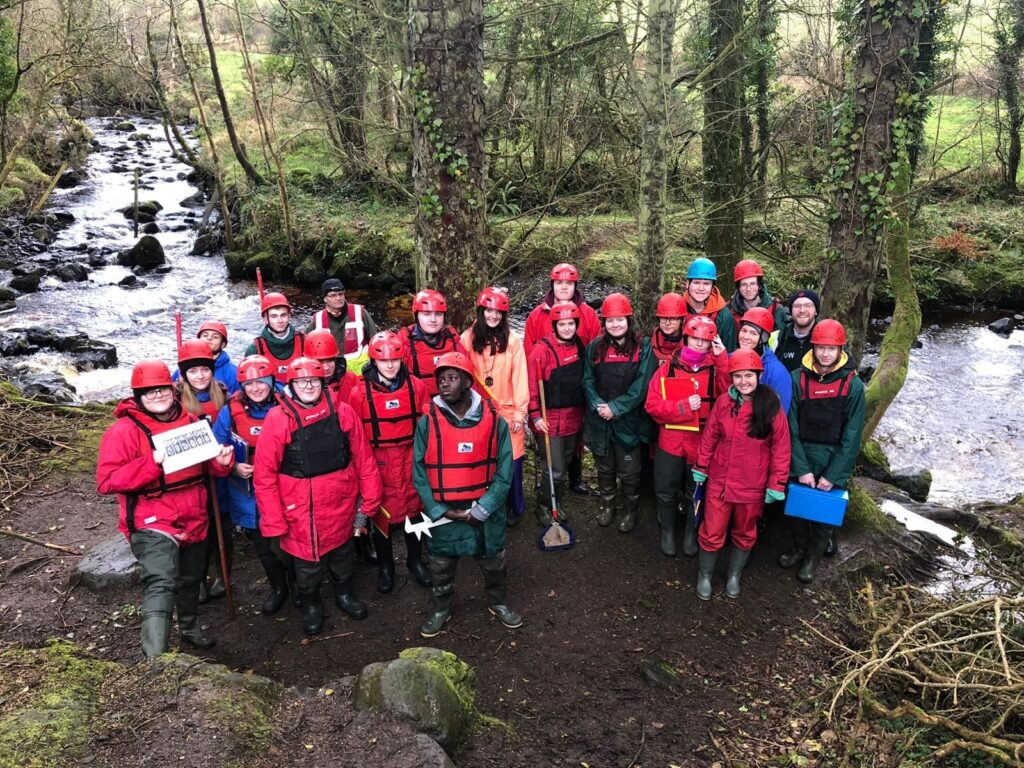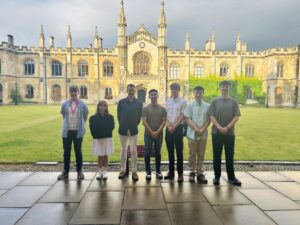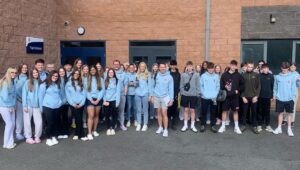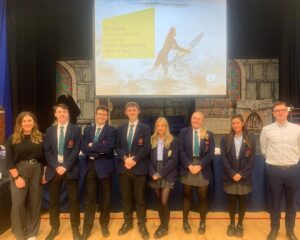We arrived on Wednesday morning and were brought into the classroom with Natalie, our leader for the day, who introduced us to sand dune succession. After lunch, we travelled to Umbra Sand Dunes, which is one of our AS case studies and studied succession at seven different sites. Using quadrats to identify different plant species, Natalie explained the process of succession in the various seral stages. Once we returned to the field centre, we had dinner and then went to the classroom for an evening of teaching during which Mrs Adamson and Mr Walmsley taught us more about the seral stages we had observed in the psammosere and the biotic/abiotic factors that had led to its formation. This was followed by a few hours chilling in the recreation room before bed.
On Thursday, we started our day in the classroom, where we met Michael. He showed us the spatial context of our river study that day and demonstrated the different methods and techniques we would need to use to collect data on the characteristics of the Curly Burn, a tributary of the River Roe. Throughout the day we visited nine different sites and got to partake in various activities, including measuring the width and depth of the river, studying particle size and shape, and calculating the gradient and velocity of the Curly Burn. Our groups swapped activities at each site, so we got a chance to try all techniques which will be useful for our AS3 fieldwork module paper. After dinner we went to the classroom with Michael, where we worked with him to construct a table of our results from the river earlier that day. Followed by Mr Walmsley who then tried to teach a very tired AS class a statistical analysis technique – needless to say we got ourselves very confused!
On the last day, we were up early and had breakfast before heading back to Roe Valley country park. Michael used this opportunity to take us on a guided tour around a forest which is very similar to our small-scale case study of a woodland ecosystem at AS level and allowed us to see first-hand many of the biotic components and species found in this unique Irish ecosystem. We particularly loved seeing the squirrels! Once we returned to the field centre, we had lunch and made sure everything was left clean and tidy before returning home.
Thanks to the Education Authority Field Centre at Magilligan and all their wonderful instructors and staff for a useful 3 days preparing us for our AS3 Fieldwork examination.
By Leah









